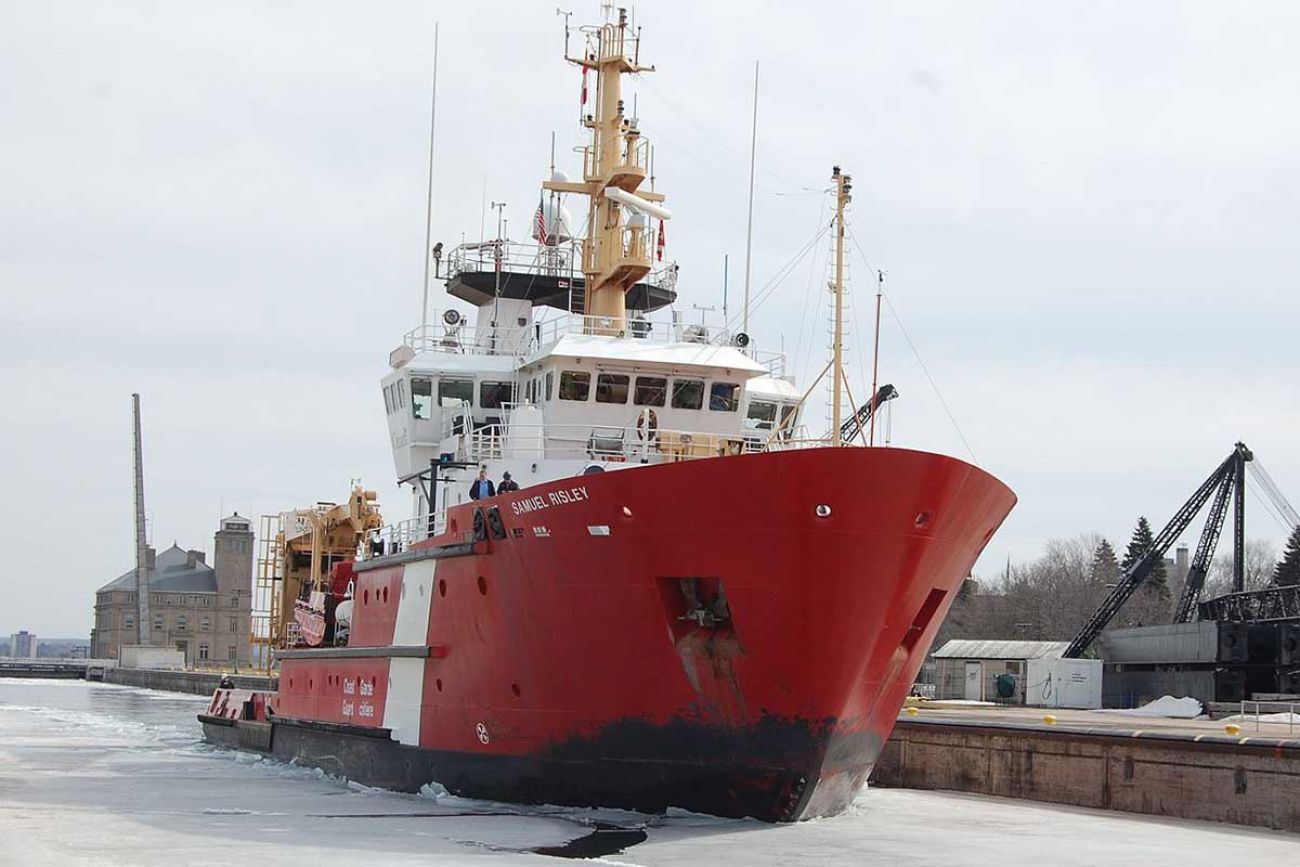Michigan Environmental Roundup: Ice jams, Lake Michigan and shipwrecks

Bridge Magazine is committed to sharing the best environmental journalism in Michigan, an experiment known as #EnviroReads.
Every two weeks, in Bridge’s Michigan Environment Watch, we’ll share a roundup of stories on the Great Lakes or other issues. If you see a story we should include next time, use the hashtag #EnviroReads on Twitter or email Environmental Reporter Jim Malewitz at jmalewitz@bridgemi.com.
On U.P.'s Sugar Island, ice jams hinder access to mainland, throwing lives into chaos
Detroit Free Press, Jan. 22
“It's a lifeline for the 800 or so year-round residents of Sugar Island, on the St. Marys River just east of Sault Ste. Marie: the car ferry that every runs the 1,200-foot trek every half hour to and from the mainland — to school, to work, to the supermarket, for health care,” reports Keith Matheny. “But a mixed-up winter of deep freezes and warm-ups has contributed to major ice jams on the river, bringing the ferry boat to a near-halt in recent weeks. To say it’s disrupted islanders’ lives would be like saying it was a little chilly in Michigan at the end of last month.”
Lake Michigan has become dramatically clearer in last 20 years — but at a steep cost
Chicago Tribune, Jan. 26
“Decades ago, Lake Michigan teemed with nutrients and green algae, casting a brownish-green hue that resembled the mouth of an inland river rather than a vast, open-water lake,” Tony Briscoe reports — not the best for swimmers, but still supporting a robust fishing industry. Since then, Lake Michigan has become even clearer than Lake Superior. Exciting news? Not exactly. That’s because a key cause of that transformation —phytoplankton-sucking invasive mussels — is ravaging underwater food chains. “For much of the past decade, prey fish, like alewives, have remained at historic lows, prompting state managers to scale back the annual stocks of prized predators, such as king salmon. The startling evolution has called into question the future of Great Lakes marine life and the region’s $7 billion fishing industry.”
Rockford may have been drinking contaminated water before 2000
MLive.com, Jan. 23
“Rockford officials are proud and relieved the city's municipal drinking water supply has tested free of toxic chemicals used by Wolverine World Wide at the company's former tannery complex on the Rogue River,” Garrett Ellison reports, citing the city’s switch 18 years ago to a groundwater well system. “But prior to 2000, the city sourced water from the Rogue River about 300 yards downstream of the Wolverine tannery grounds, where testing in October confirmed groundwater near the riverbank was polluted by extremely high levels of toxic chemicals known as per- and polyfluoroalkyl substances, called PFAS or PFCs.”
In the Great Lakes, They’re Battling Ice, and Time. Take a Look.
New York Times, Jan. 18
“An intricate boat ballet plays out each January on the frigid waters of the northern Great Lakes. Thousand-foot freighters scramble to make final deliveries of iron ore to steel mills,” reports Mitch Smith. “The Coast Guard carves paths through ice-clogged shipping routes. And the Soo Locks, the engineering marvel connecting Lake Superior with points to the south and east, shut down for 10 weeks of maintenance while the weather is at its most brutal.” Photographs and video by Sam Hodgson offer a vivid look at the dance.
Historic shipwreck preservation in danger in the Great Lakes
Michigan Radio, Jan. 16
“More than three centuries of thriving marine commerce and those notorious storms in the Great Lakes have given Michigan a wealth of historic shipwrecks,” Tracy Samilton reports. “There are nearly a thousand on the bottomlands of the state's 13 designated underwater preserves alone. But Michigan's mostly volunteer system of protecting the shipwrecks is showing signs of trouble.”
Michigan Environment Watch
Michigan Environment Watch examines how public policy, industry, and other factors interact with the state’s trove of natural resources.
- See full coverage
- Subscribe
- Share tips and questions with Bridge environment reporter Kelly House
Michigan Environment Watch is made possible by generous financial support from:
Our generous Environment Watch underwriters encourage Bridge Michigan readers to also support civic journalism by becoming Bridge members. Please consider joining today.
See what new members are saying about why they donated to Bridge Michigan:
- “In order for this information to be accurate and unbiased it must be underwritten by its readers, not by special interests.” - Larry S.
- “Not many other media sources report on the topics Bridge does.” - Susan B.
- “Your journalism is outstanding and rare these days.” - Mark S.
If you want to ensure the future of nonpartisan, nonprofit Michigan journalism, please become a member today. You, too, will be asked why you donated and maybe we'll feature your quote next time!



